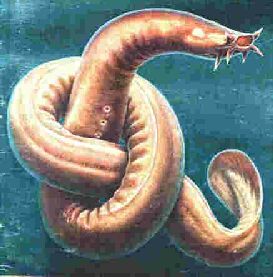

PhD student Douglas S. Fudge, B.A., M.Sc.
 |
The hagfishes are renowned for their ability to produce vast quantities of slime when
provoked. The aim of my research is to describe and understand the mechanical properties of
hagfish slime in terms of its molecular structure, as well as its functional significance for
the animal.
Hagfish slime is produced in numerous glands that line both sides of the hagfish's body, and is usually released when they are stressed or provoked. The slime comes out of the glands in a concentrated form, but quickly swells when it contacts seawater. It is believed that the resulting cocoon of slime protects the hagfish from predatory attacks, and may even threaten to suffocate fish predators. A hagfish doesn't suffocate in its own slime because it has a clever trick for extricating itself it when danger passes - it simply ties itself in a knot and passes the knot down its body, thereby wiping the slime away. Hagfish slime is unlike other slimy secretions in that it is reinforced with very fine fibres. Our data show that these fibres lend tensile strength and toughness to the slime. Subsequent research will investigate the mechanical properties of the mucus component of the slime, as well as the properties of naturally-produced slime cocoons. |